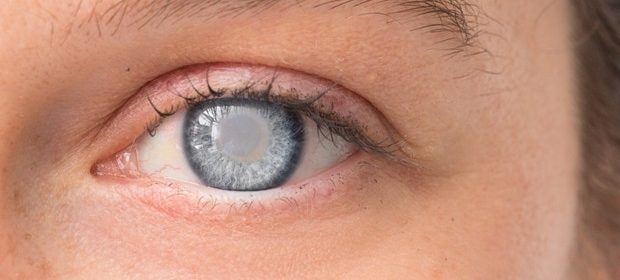Cataract Epidemiology

A cataract is a cloudy patch that develops in the eye lens, causing blurred vision. The lens lies behind the pupil and this usually transparent structure enables light to reach the retina. On reaching the retina, this light is transformed into nerve signals, which are then sent to the brain for visual interpretation. If a cataract develops in this lens, some of this light may fail to reach the retina and vision becomes less clear.
A cataract can also affect sight by:
- Making it difficult to see in dim light
- Creating a halo around bright lights, which may also become dazzling to look at
- Creating a yellow or brown tinge around anything viewed
- Causing colors to become faded
A cataract can affect one or both eyes, but cannot be spread from one eye to the other. These cloudy patches usually take a long time to develop, meaning impaired eyesight develops gradually. Cataracts eventually worsen in severity until they interfere with day-to-day life, affecting people’s ability to read or drive, for example. Surgery is eventually required to remove and replace the affected lens.
Cataracts are very common, but are more likely to develop in older individuals. In the UK alone, age-related cataracts are thought to affect around half of those aged over 65 years to some degree, with this figure rising to 70% in those aged over 85. In France, about 20% of individuals aged more than 65 years are affected, with this figure rising to 60% in those older than 85. Australian studies have shown that the prevalence of cataract doubles with each decade of age after 40 years and that nearly everyone aged 90 years or older is affected by cataracts. Other developed countries show similar incidence and prevalence of cataract.
As a common illness in older individuals, the fact that people are living longer every decade means the prevalence of cataracts is on the rise and they are more common today than ever before. Estimates predict that, currently, cataracts affect around 22 million adults aged 40 or older and that by the year 2020, this number will have approximately doubled.
Causes
The eye lens is composed of protein and water, with the proteins arranged in such a way that the lens stays transparent, allowing light to pass through it. As people age, these proteins can start to aggregate, causing a small cloudy patch to develop in the lens. Eventually, this cataract impairs vision, once it has become large enough. Researchers think this protein clumping that causes cataracts may develop as a result of wear and tear on the lens as people age. In the United States, changes in the health of the eye lens due to aging have been reported by 42% of those aged 52 to 64 years, 60% of those aged 65 to 74 years, and by 91% of those aged 75 to 85 years. However, they also suspect that certain factors may predispose to the condition such as diabetes and smoking, for example.
Cataracts in developing countries
Cataracts are the most common cause of impaired vision globally and particularly affect populations in developing countries, where they often cause blindness.
One study showed that in India, the prevalence of cataracts is three times greater than in the United States, with 82% of Indians aged 75 to 83 years affected by cataracts, compared with only 46% of US individuals from the same age group.
It has been estimated that cases of cataracts will continue to rise predominantly in developing countries where population increases will be the greatest. As the number of individuals aged over 65 years continues to increase, so will the incidence of cataract and the need for cataract surgery.
Sources
- www.nhs.uk/conditions/cataracts-age-related/Pages/Introduction.aspx
- http://www.nei.nih.gov/health/cataract/webcataract.pdf
- www.nccah-ccnsa.ca/…/vision_cataracts_web.pdf
- http://www.aoa.org/documents/CPG-8.pdf
- http://whqlibdoc.who.int/bulletin/2001/issue3/79(3)249-256.pdf
- www.rcophth.ac.uk/…/…ct-Surgery-Guidelines-2010-SEPTEMBER-2010.pdf
- http://www.bupa.co.uk/health-information/directory/c/cataracts
- https://nei.nih.gov/health/cataract/cataract_facts
- https://nei.nih.gov/eyedata/cataract
- www.quantel-medical.com/pathologies-cataract.php
- http://www.uptodate.com/contents/cataract-in-adults
- http://emedicine.medscape.com/article/1210837-overview#a6
Further Reading
- All Cataract Content
- What are Cataracts?
- What Causes Cataracts?
- Cataract Classification
- Cataract Treatment
Last Updated: Jun 20, 2019

Written by
Sally Robertson
Sally has a Bachelor's Degree in Biomedical Sciences (B.Sc.). She is a specialist in reviewing and summarising the latest findings across all areas of medicine covered in major, high-impact, world-leading international medical journals, international press conferences and bulletins from governmental agencies and regulatory bodies. At News-Medical, Sally generates daily news features, life science articles and interview coverage.
Source: Read Full Article